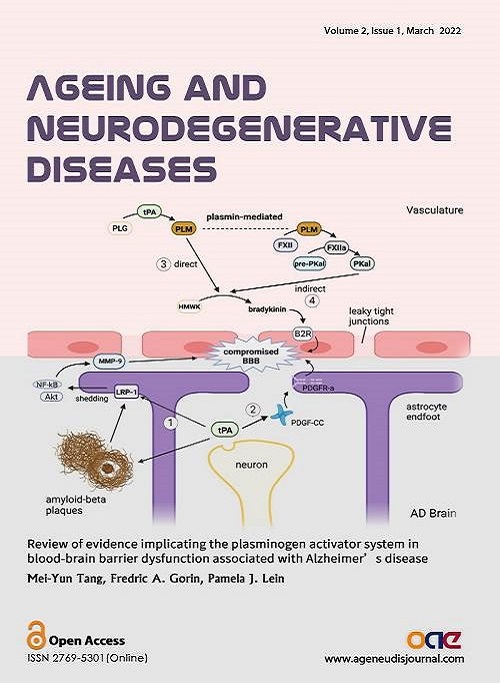Volume 2, Issue 1 (March, 2022) – 4 articles
Cover Picture: Elucidating the pathogenic mechanisms of Alzheimer's disease (AD) to identify therapeutic targets has been the focus of many decades of research. While deposition of extracellular amyloid-beta plaques and intraneuronal neurofibrillary tangles of hyperphosphorylated tau have historically been the two characteristic hallmarks of AD pathology, therapeutic strategies targeting these proteinopathies have not been successful in the clinics. Neuroinflammation has been gaining more attention as a therapeutic target because increasing evidence implicates neuroinflammation as a key factor in the early onset of AD disease progression. The peripheral immune response has emerged as an important contributor to the chronic neuroinflammation associated with AD pathophysiology. In this context, the plasminogen activator system (PAS), also referred to as the vasculature’s fibrinolytic system, is emerging as a potential factor in AD pathogenesis. Evolving evidence suggests that the PAS plays a role in linking chronic peripheral inflammatory conditions to neuroinflammation in the brain. While the PAS is better known for its peripheral functions, components of the PAS are expressed in the brain and have been demonstrated to alter neuroinflammation and blood-brain barrier (BBB) permeation. Here, we review plasmin-dependent and -independent mechanisms by which the PAS modulates the BBB in AD pathogenesis and discuss therapeutic implications of these observations.
view this paper
Download This Issue Viewed:







